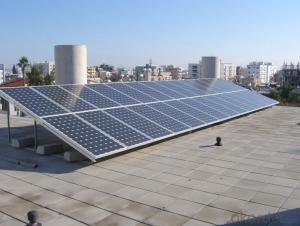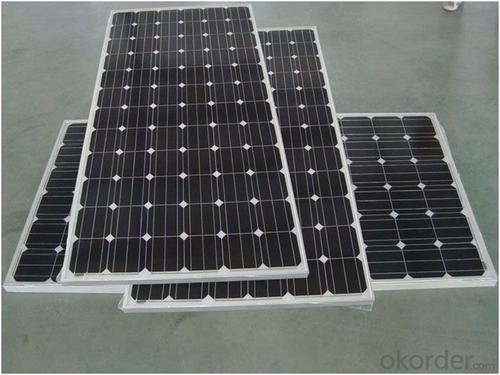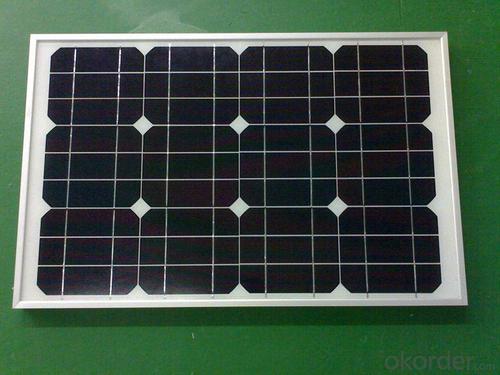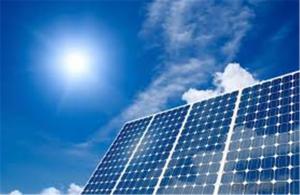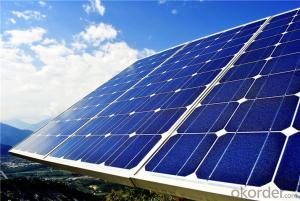Silicon Solar Wafer Home Lighting Solar Panel Kit 10w to 500w
- Loading Port:
- China main port
- Payment Terms:
- TT OR LC
- Min Order Qty:
- 500 watt
- Supply Capability:
- 20000000 watt/month
OKorder Service Pledge
OKorder Financial Service
You Might Also Like
Destription:
Solar panel refers to a panel designed to absorb the sun's rays as a source of energy for generating electricity or heating. A PV module is a packaged, connected assembly of typically 6×10 solar cells. Solar PV panels constitute the solar array of a photovoltaic system that generates and supplies solar electricity in commercial and residential applications.
Main Characteristic
1.Manufactured according to international quality and Environment Management
System (ISO9001, ISO14001)
2. By the high transmittance, low iron tempered glass, anti-aging of the EVA(polyethylene - vinyl acetate), high-performance crystalline silicon solar cells, good Weather resistance TPT (fluoroplastics composite membrane) by pyramid , has a good Weather resistance and anti-UV, hail, water-proof capacity.
3. OEM and customerized package are accepted
4. High efficiency crystalline silicon solar cells
Quality warranty
1.10 years limited warranty on material and workmanship
2. more than 90% power output in 10 years
3. more than 80% power output in 25 years
Product show




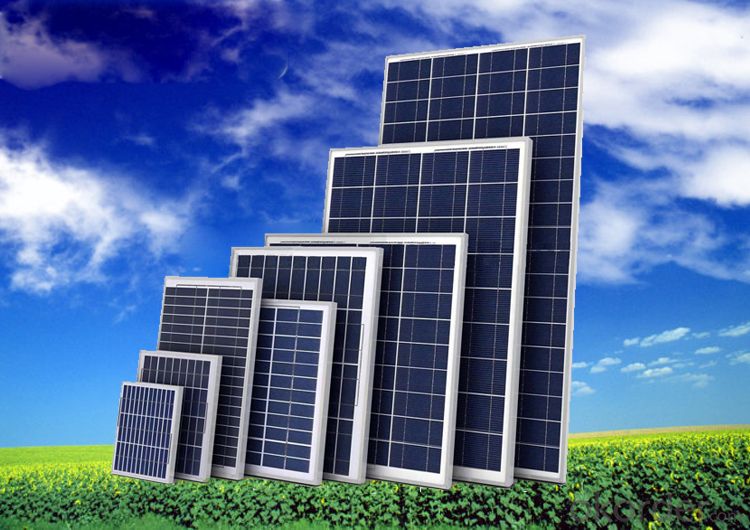
- Q: What is the impact of impurities in solar silicon wafers on performance?
- Impurities in solar silicon wafers can have a significant impact on the performance of solar cells. These impurities, such as metal contaminants or dopants, can introduce defects in the crystal structure of the silicon, affecting the efficiency of electron movement and trapping photons. This can lead to reduced power output, decreased conversion efficiency, and shorter lifespan of the solar cells. Therefore, it is crucial to minimize impurities during the manufacturing process to optimize the performance and overall quality of solar silicon wafers.
- Q: Ask a question about integrated circuit manufacturing: how to realize the functions of capacitors, resistors and transistors on a single chip? In the end how to
- You connect the line in two holes on the silicon conductive layer in the middle, this is not a resistance capacitance resistance that integrated circuit in the senior middle school physics is not the kind of silicon wafer by resistance capacitance has made but I hope you can understand the function of course this is just the front-end integrated circuit
- Q: How is a front contact applied to a solar silicon wafer?
- A front contact is typically applied to a solar silicon wafer using a screen printing process. The process involves depositing a conductive paste onto the front surface of the wafer through a fine mesh screen. This paste consists of metal particles, such as silver or aluminum, mixed with a binder material. The screen is aligned with the wafer's surface, and the paste is forced through the screen using a squeegee, leaving a patterned layer of conductive material on the wafer. This front contact layer helps to collect and transport the electrical current generated by the solar cells.
- Q: How are solar silicon wafers connected in a solar array?
- Solar silicon wafers are typically connected in a solar array through a process called soldering. Soldering involves joining the wafers together using a conductive material, such as silver paste or copper ribbon, which creates electrical connections between the individual cells. This allows the solar cells to work collectively and generate electricity when exposed to sunlight.
- Q: Can solar silicon wafers be used in desert regions?
- Yes, solar silicon wafers can be used in desert regions. In fact, desert regions are ideal for solar energy generation due to their abundant sunlight and high solar irradiance. The dry and arid climate in deserts also helps to maintain the efficiency of solar panels by reducing the moisture and dust accumulation on the surface of the silicon wafers.
- Q: What is the purpose of a spectral response in a solar silicon wafer?
- The purpose of a spectral response in a solar silicon wafer is to measure the efficiency of the wafer in converting different wavelengths of sunlight into electricity. By analyzing the spectral response, we can assess the performance of the silicon wafer under different light conditions and optimize its design for maximum energy conversion.
- Q: What is a silicon wafer cutting edge material?
- Online cutting process, the cutting fluid (usually polyethylene glycol) and cutting edge material sand spray with the fall in thin steel wire by thin steel wire net, high speed, make the mortar in cutting edge material and pressed online silicon rod or a silicon ingot surface high speed grinding,
- Q: What is the typical return on investment for a solar silicon wafer installation?
- The typical return on investment for a solar silicon wafer installation can vary depending on various factors such as the size of the installation, location, local solar incentives, and energy consumption patterns. However, on average, it is estimated that solar silicon wafer installations can provide a return on investment within 6 to 10 years.
- Q: What is the role of the semiconductor wafer
- , in fact, is still relatively soft, before the back of the plasma ETCH will generally have a step UVbake, reinforcement) from the center to the outside of the proliferation of a circle around, until completely flat
- Q: Can solar silicon wafers be used in solar-powered agricultural applications?
- Yes, solar silicon wafers can be used in solar-powered agricultural applications. These wafers are commonly used to manufacture solar panels, which can be utilized to power various agricultural applications such as irrigation systems, greenhouse ventilation, and livestock water pumps. The solar panels convert sunlight into electricity, providing a clean and renewable energy source for agricultural purposes.
Send your message to us
Silicon Solar Wafer Home Lighting Solar Panel Kit 10w to 500w
- Loading Port:
- China main port
- Payment Terms:
- TT OR LC
- Min Order Qty:
- 500 watt
- Supply Capability:
- 20000000 watt/month
OKorder Service Pledge
OKorder Financial Service
Similar products
Hot products
Hot Searches
Related keywords


